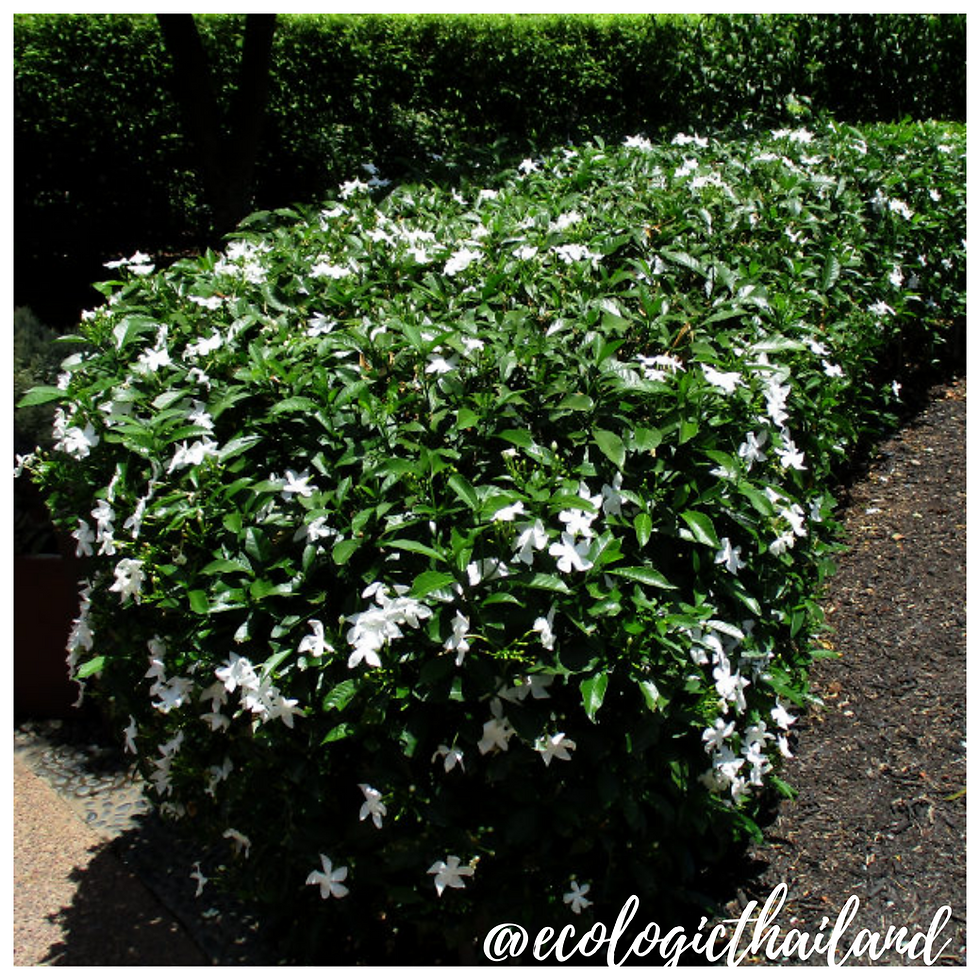Purple Allamanda
- Eco-Logic Resort
- Dec 10, 2020
- 2 min read
Banburee-see-koolaab | บานบุรีสีกุหลาบ | Allamanda blanchetii
Family: Apocynaceae - Genus: Allamanda

This beautiful flowering climber can be found in Paksong area. Because all the parts of the plant are toxic if swallowed and the latex from the cuttings can be irritating for skin we do not grow this vine on the premises of TCDF and Eco-Logic.
Vigorous and fast-growing, Purple Allamanda is an evergreen tropical shrubby climber boasting ravishing rose-purple trumpet flowers, Grown as a vine or shrub.
During a season allamanda grows up for 5 centimeter to 20 centimeter, highest possible height is 20 to 40 centimeter.
In the wild, allamandas grow along riverbanks and other open, sunny areas with adequate rainfall and perpetually moist substrate. The plants do not tolerate shade or salty or alkaline soils, and they are sensitive to frost. They grow rapidly, sometimes spreading 3 meters per year. They can be propagated from cuttings.
All the parts of the plant are toxic and the latex can cause allergic reactions.
The purple allamanda blooms the whole year through.

THE VINE/SHRUB
Evergreen climbing shrub that grows to 1.5 – 3 meter high.

THE LEAVES
Green elliptic leaves, about 10 cm – 20 cm wide, are arranged in whorls of four. Leaves are hairy with acuminate apex and entire leaf margin.

THE FLOWERS
Terminally borne flowers are purplish pink to violet, 5 cm to 6.5 cm wide with a yellowish tube.

THE SEEDPODS
The flowers are followed by thorny ovoid seed-pods. .
CULINARY USES
All the parts of the plant are toxic and the latex can cause allergic reactions.
NUTRITION
All the parts of the plant are toxic and the latex can cause allergic reactions.
TRADITIONAL MEDICINAL USE OF TAMARIND
NOTE: please take advice from a doctor if you are planning to use herbal medicine.
Allamanda species have been used in systems of traditional medicine for various purposes. The plant has been used to treat liver tumors, jaundice, splenomegaly, and malaria. In analyses, some species have shown some activity against carcinoma cells, pathogenic fungi, and HIV.
INTO THE WILD: a down to earth experience

For guests and visitors to Paksong we organize weekly tours "The Edible Forest" and Foraging weekends: Into the Wild. We work with local guides to take you in the jungle of Paksong. After foraging, we will cook a meal with the ingredients, using bamboo together with you!
Come and join and learn about the abundance of food that nature gives us!
INTO THE WILD!


















Comments